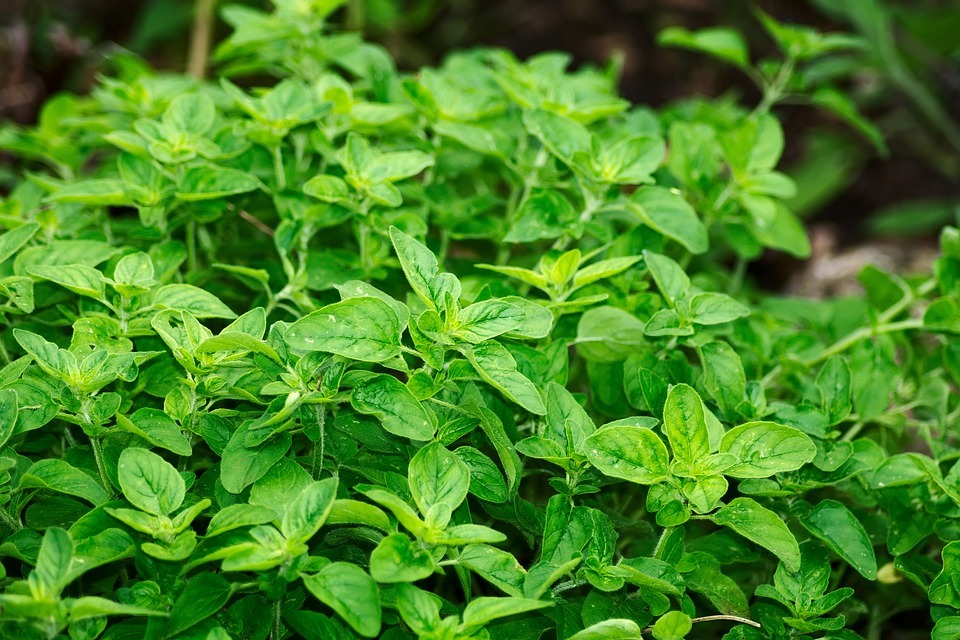One of the more common spices used especially in Italian dishes is oregano. A part of the mint family, oregano is also related to marjoram. Oregano has a thyme-like taste that adds much flavor and is aromatic. It is also common to find oregano oil extracted for medicinal use.
Health Benefits and Side Effects
Oregano oil is believed to have many benefits to health. It can be assumed that the herb itself would also benefit. Oregano has been used for medicinal purposes in folk medicine and natural remedies for a very long time.
- The antioxidant effects of thymol and rosmarinic acid that are components of oregano support the immune system and can improve the efficiency of your immune response.
- Oregano contains a component that potentially fights cancer. It appears to inhibit the growth of cancer cells, according to experiments performed in 2014.
- There are definite antibacterial benefits to oregano. These work against bad bacteria that can affect the gut, the skin, and other areas.
- Its high fiber content helps with digestion and regularity, fostering good gut health.
- The omega-3 fatty acids provided by oregano are excellent for the heart.
- It contains B vitamins which can offer a boost of energy.
- It has potential as an anti-viral compound. Experiments in test tubes showed it effective against norovirus and herpes simplex.
- It has been used against colds and respiratory issues.
- Some of the compounds can help with type 2 diabetes, probably partly due to its antioxidants.
- It is believed that oil of oregano will eliminate intestinal parasites.
It is rare for people to have negative side effects from oregano. It can cause thinner blood, so check with a doctor if blood thinners are already being taken. Avoid the herb for two weeks before surgery to prevent excess bleeding. If oregano oil is being used topically, always dilute with a carrier oil such as olive oil to prevent skin damage. Oregano oil can be added to food; mix well before consuming. In some cases, it can affect absorption of zinc, iron, and copper and in some people it may lower blood sugar levels. While allergies to oregano are not common, they are possible, and more likely in someone who is already allergic to a plant in the Lamiaceae family – basil, lavender, mint, and sage.
Food and Nutrition
Dried oregano leaves contain, in one teaspoon, about 3 calories, less than a gram of carbohydrate, nearly half a gram of fiber, 16mg calcium, along with a bit of phosphoros, potassium, folate, tryptophan, vitamin C, vitamin A, vitamin E, and a couple other antioxidants.
Oregano is often used in tomato-based products such as pasta sauces, lasagna, and pizza because it goes very well with tomato. It can also be added to vegetable casseroles, beans and similar dishes, fish, and chili. It is great sprinkled on chicken, garlic bread, and salads. It goes well in stuffing. It is great mixed into pizza dough or bread dough. It also goes well with mozzarella cheese.
If the flavor is too weak for your taste, try adding it close to the end of cooking so it is fresher when eaten. Crush or chop the leaves to release extra flavor. Start with a little, because it can be strong, and add more to reach the desired taste. A teaspoon of dried oregano is equal to about a tablespoon of fresh.
Other Uses
Mix about 20 drops oregano oil to about 15 drops lemon or lime oil in a spray bottle and fill it up with water. Shake well and spray on surfaces to repel small bugs. A similar effect may be achieved by putting several drops of oregano oil on cotton balls and stashing them in the corners.
A natural mosquito repellent can be made from equal parts oregano, citronella, and peppermint oil (about 10 drops of each) added to 4 ounces of distilled water and about 4 ounces of witch hazel. Spray on clothing (rather than skin) to keep mosquitoes at bay.
Growing Oregano
Oregano is a perennial. It makes good ground cover, and it loves full sun and warm weather. It can be started indoors several weeks before the last frost in the spring, so the plant is well started before transplanting into the ground. Seeds or cuttings can be used to start the plant. Oregano seeds or young plants can go outside into well-drained soil when the soil is around 70 degrees Fahrenheit.
Plants should have 8 to 12 inches between; they will grow quite tall – up to 2 feet. For a bushier plant, trim regularly. This will happen naturally if the leaves are used for cooking purposes. Start trimming once the plant reaches 4 inches tall.
Water whenever the soil feels dry. Add water until it begins to come out of the bottom drainage holes.
Oregano drops its seeds which will develop into new plants. Thin the plants by removing some or dividing them into new containers (or rows, if they are outside).
Watch for aphids and mites.
Oregano leaves can be frozen or dried to use later and the leaves can also be used fresh.

